OpenCare5G: O-RAN in Private Network for Digital Health Applications
Abstract
1. Introduction
2. Related Work
- Agility in software-enabled architecture unification makes network suitable for existing, past and future generations;
- Deployment flexibility for disaggregation and software association makes the network flexible for installation, update and extension;
- Real-time responsiveness, since vRAN is service-specific network-oriented software that behaves based on the intended service to real-time services and requires very low latency from less critical services;
- Reduction in operating costs by estimating the plug-and-play feature of O-RAN; modern learning methods can reduce the maintenance cost dramatically when compared with traditional solutions.
3. Proposed Solution
3.1. OpenCare5G Project Architecture
- 1.
- The Radio Subnetwork of the gNB-RU (Fronthaul) which has two radio units (RUs) formed by an active internal antenna (Advanced Antenna System - AAS RU) coupled to the Remote Radio Unit (RRU) for the 5G NR Sub-6GHz type 4T4R. The physical interface for glass fiber optics to control coverage and mitigate interference with “digital beamforming” on demand with internal connectivity is able to increase the transfer rate for speeds above 2 Gbps up to 10 Gbps for the two distinct environments (Exam and Control Room) at HCFMUSP with the following specifications [29,30]:
- Type Airvelocity 2700 RU from Airspan company for 5G RAN;
- 2 AAS-RU units with 4 4T4R AAS active antennas, 3.7–3.8 GHz range, n77 band, FM, DC;
- 5G Sub-6 radiates radio frequency energy;
- F2 Fronthaul interface between the RU and the DU for 10 GbE;
- vRAN Split 7.2x; the RU/DU must conform to functional split RAN 7.2a, Duplex Operation Mode and 100 MHz Bandwidth [29];
- 2.
- The Indoor 5G CPE in the subnetwork of the gNB-RU (Fronthaul) with two CPEs provides connectivity, speed and latency similar to optical fiber connecting electronic devices via 5G; it distributes signal by Wi-Fi 6 (802.11ax) to the doctors’ examination room and ultrasound equipment examination room at HCFMUSP. Its implementation alleviates network congestion and efficiency in the face of high traffic demand;
- 3.
- The Fronthaul Transport Network of gNB-RU is connected by glass fiber optics to obtain broadband with synchronous ethernet interface, using wave-length division multiplexing (WDM) connected to RU to improve the efficiency/throughput of the medium with an enhanced common public radio dynamic interface (eCPRI PDU) encapsulated in ethernet for VLAN, class 2;
- 4.
- Between RU/DU, O-RAN Alliance (Open RAN) of User Plan (UP) traffic service points, time synchronization via Global Positioning System (GPS) [25,31]. At this stage we have the Fronthaul packet network carrying the eCPRI PDU traffic so that it is virtually lossless. Depending on the use case in 5G, the latency in the Fronthaul network is not more than tens of microseconds;
- 5.
- The DU/CU must combine to allow dual connectivity between the Sub-6GHz and 5G network bands, as well as coordinated transmission to eliminate interference to the minimum possible [29];
- In the “Subnetwork/Sync” we have the switch and the GPS connection with the gNB-RU (Fronthaul);
- The DU/vDU of the gNB-DU (Midhaul) of the distribution unit (DU) mounted on a COTS server with docker system for vDU containerization;
- Midhaul 1 Transport Network from gNB-DU (Midhaul) with glass fiber optics and split 2.0 interface for LAN-to-LAN connection Midhaul 2 Transport Network from gNB-DU (Midhaul) to Unit Centralized (5G-O-CU);
- The CU/vCU of the gNB-CU (Backhaul) of the Centralized Unit (5G-O-CU) mounted on a COTS Server performing the containerization and virtualization of the vCU in the native cloud connected to the 5G Core (5GC) server, which is connected to the datacenter in Itaú, 9 km from HCFMUSP.
5G NR/NGC Protocol Framework Stack
- Layer L1 on sublayer RF, PHY Low(L) and High(H);
- Layer L2 on sublayer MAC (L/H)/(SCH), RLC (L/H) and PDCP (L/H);
- Layer L3 on sublayer RRC and SDAP, only SA and not NSA, NAS and IP.
- PHY sublayer offers transport channels to the MAC sublayer;
- MAC sublayer offers logical channels to the RLC sublayer;
- RLC sublayer offers RLC channels to the PDCP sublayer;
- PDCP sublayer offers Radio Bearers to the SDAP sublayer;
- SDAP sublayer provides the QoS flows.
- Packet Data Convergence Protocol (PDCP) is the first sublayer in the 5G NR protocol stack that receives/transmits network layer traffic (TCP/IP traffic);
- Data Radio Bearer (DRB) has the logical connection used within the 5G protocol stack to carry protocol data units (PDUs);
- The Service Data Adaptation Protocol (SDAP) functionality is to map the QoS flows for the DRB in the PDCP sublayer in the DL and UL directions [40].
- Logical channels that define the type of data to be transferred with the traffic (user data), such as “paging messages”, dedicated control information;
- Transport channels that define the information to be transported to the physical layer and the characteristics of the data, such as error protection, channel coding, the cyclic redundancy check (CRC) and the size of the data packet;
- Physical channels characterized by their time and access protocols, data rates as traffic channels [40].
3.2. Fronthaul Challenges and Functional Division Options
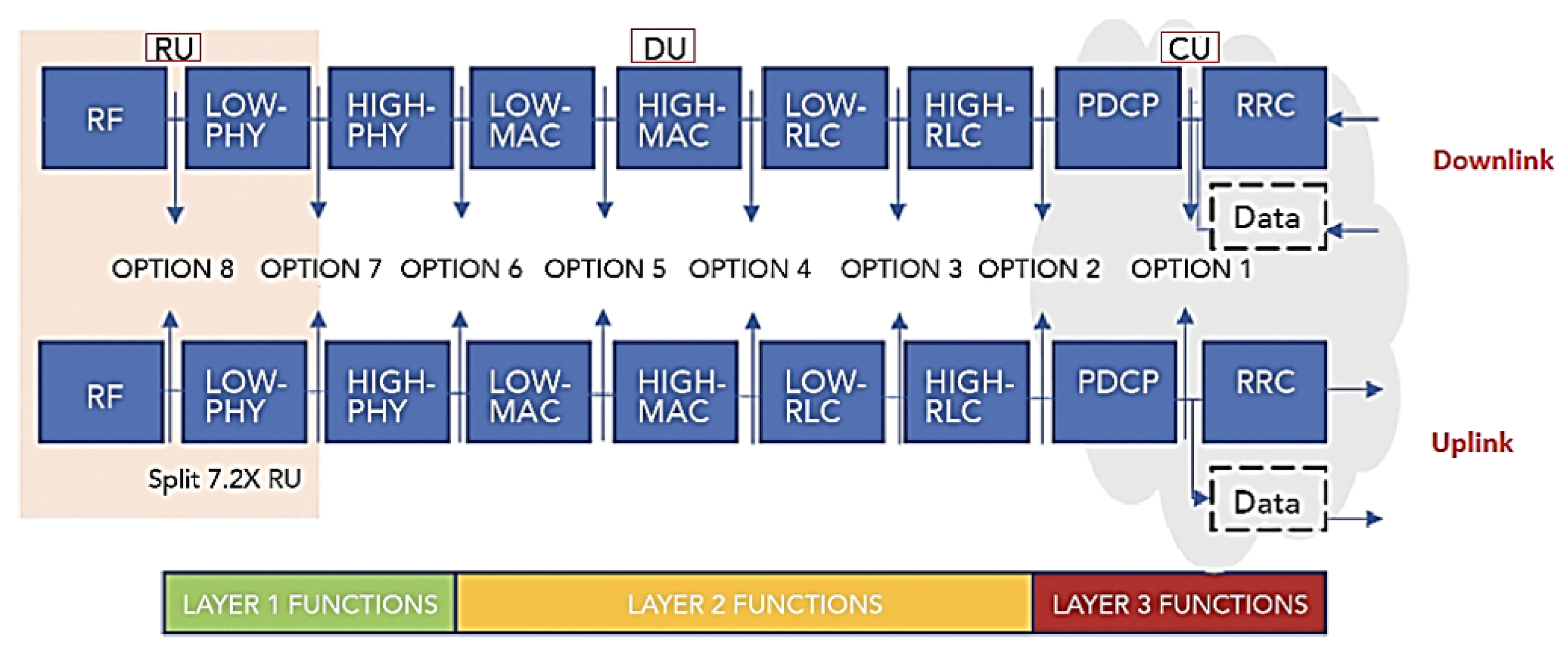
3.3. Installation of the RU (AAS-RU and the RRU)
3.4. DU (Distributed Unit)
3.5. 5G Core Network (5GCN)
3.5.1. Core Architecture Based on Services and Reference Point
3.5.2. CUPS—Architecture for Control and User Plane Separation
- A gNB can consist of one gNB-CU-CP for several gNB-CU-UPs and one gNB-DU;
- At the same time, one gNB can consist of one gNB-CU-CP for several gNB-CU-UPs and several gNB-DUs;
- gNB-CU-CP is connected to gNB-DU by the F1-C interface;
- gNB-CU-UP is connected to gNB-DU by the F1-U interface;
- gNB-CU-CP is connected to gNB-CU-UP by the E1 interface;
- One gNB-DU is connected to only one gNB-CU-CP;
- One gNB-CU-UP is connected to only one gNB-CU-CP.
- A logical node hosting the RRC;
- The CP part of the PDCP protocol of the gNB-CU for an gNB;
- The gNB-CU-CP terminates the E1 interface connected with the gNB-CU-UP and the F1-C interface connected with the gNB-DU [53].
- A logical node hosting the UP part of the PDCP protocol of the gNB-CU for an gNB, and the UP part of the PDCP protocol and the SDAP protocol of the gNB-CU;
- The gNB-CU-UP terminates the E1 interface connected with the gNB-CU-CP and the F1-U interface connected with the gNB-DU [53].
3.5.3. User Plane and Control Plane for UE/Device and gNB Protocol Stack with Network Functions AMF and UPF
- Device UP (Device/UE) connects to the UPF network function via IP-to-IP;
- CP is connected via NAS-to-NAS by the AMF network function;
- The NAS and RRC sublayers are unique to the PC;
- The message-based IP transport protocol known as SCTP is used between the eNB (Evolved NodeB) and the MME (Mobility Management Entity) to transport the NAS messages;
- Reliable message transfer between eNB and MME;
- RRC deals with the general configuration of a cell including the PDCP, RLC, MAC and PHY sublayers [40];
- The SDAP sublayer deals with the mapping between the QoS flow and the radio bearers;
- IP (Internet Protocol) packets are mapped to radio bearers according to their QoS requirements;
- The PDCP sublayer is primarily responsible for IP header compression/decompression, reordering and duplicate detection, encryption/decryption and integrity protection;
- The RLC sublayer performs error correction through an automatic repeat request (ARQ) mechanism, segmentation/resegmentation of IP packets (header compression) and sequential delivery of data units to upper sublayers;
- The MAC sublayer is responsible for error correction through the ARQ3 hybrid mechanism (HARQ), uplink and downlink scheduling [40];
- The PHY sublayer handles encoding/decoding, modulation/demodulation, multi-antenna processing and mapping signals to physical time-frequency resources;
- The CP is responsible for control signaling for connection configuration, mobility and security;
- Control signaling originates from a core network or from an RRC sublayer in the gNB;
- The PHY sublayer is the key component of the NR physical layer technology that undergoes modulation, waveform, multi-antenna, transmission and channel coding [38].
3.6. Network Services Based on Adaptive Network Slicing on Open RAN
3.7. Virtualization and Containerization for vDU and vCU
- Block 1, the physical hardware infrastructure of the O-DU and O-CU servers, network and storage in COTS;
- Block 2, the Host Server for the host operating system (HOS) connected to the network, offering information, resources, services and applications needed by the user and other nodes in the network;
- Block 3 provides virtual containers with Docker Engine, which is the heart of the Docker System to realize the client–server architecture application installed on the host server [55]. The system uses Container Docker and Machine Virtualization (VM) concepts over the hypervisor. With containers, processing is performed directly on the host server, using the Docker mechanism to make it faster and lighter [55].
- PODs are composed of a container in the most common use cases or several tightly coupled containers. These containers are grouped into PODs so that resources are shared more efficiently. That is, we will have 1-n application containers (App) on top of the vDU, as the containers are abstractions in the 1-n application layer with Docker (Bins/Libs) packaging the application and its dependencies into the container in a single operating system (OS) with resources shared between containers [55];
- Each application in the project virtual container runs in its own isolated process controlled by the Docker Engine, as if it were a host operating system. However, it will not virtualize the entire environment on the cDU and cvCU Servers. It will work on top of the n application and its dependencies, creating virtualization only at the host operating system level and not on the entire server, making the project system light and managing to initialize the applications in seconds compared to the traditional VMs. Less RAM, CPU and storage will thus be used to offer lower latency [55].
- F1AP (F1 Application Protocol) is used to relay Packet Data Convergence Protocol (PDCP) CP messages and Radio Resource Control (RRC) messages between the gNB-DU and the gNB-CU-CP;
- E1AP (E1 Application Protocol) is used to program GTP-U tunnels for the datapath in gNB-CU-DP;
- XnAP (Xn Application Protocol) is the control protocol used between gNBs to support a variety of O-RAN-related procedures, such as establishing dual connectivity, coordinating Xn-based handovers (duplication), O-RAN data forwarding and paging. It is used in the SCTP sublayer to coordinate gNB-CU-MC functionality (MultiCast functionality within gNB-CU);
- NG-AP (NG Application Protocol) provides CP signaling between the node via NG-RAN and the access and mobility management function (AMF). The services provided by the NG-AP are divided into UE-associated and non-UE-associated;
- SCTP (Flow Control Transport Protocol) is similar to TCP in terms of fundamentals, but adds features that compensate for some weaknesses of TCP.
3.8. cvCU—5GCN Containerized/Virtualized Unit
3.9. Platform Control with ACP
4. Experimental Evaluation
4.1. Definition of the Test Plan
- The first phase is related to the PoC-1 involving an active 5G private network with the architecture set up at the InRad of HCFMUSP in two rooms—the Intervention Sector Room and Ultrasound Exam Room—to use the portable ultrasound (USG) on a patient lying down on a stretcher. He was accompanied by Doctor 1, who performed the USG of the abdomen, and Doctor 2, a radiologist in the central room in front of a monitoring station who analyzed the data captured from the exams, and whose rooms are covered by the 5G network;
- The second phase is related to PoC-2 involving the same 5G private network remotely connected to the Computational Tomography MRI/CT.
4.2. Proof of Concept 1
- Model Limity C5-2 transducer;
- Curved broadband;
- Operating frequency range from 2 to 5 MHz;
- Curvature radius of 50 mm;
- 2D color Doppler imaging, M-mode, advanced XRES for multivariate harmonic imaging, SonoCT;
- High-resolution diagnostic imaging for deeper applications: preconfigured enhancements for abdominal, gallbladder, gynecology/obstetrics and lung imaging;
- Central venous catheter marker;
- USB-C Transducer.
- Transducer: Model M3;
- Convex;
- Weight: 240 g;
- Wireless;
- Operating Frequency Range from 3.5 to 5 MHz;
- Depth from 90 to 280 mm;
- 3-h autonomy in continuous use, 6-hour in standby;
- Features: Harmonics, Sector Gain, Noise Smoothing;
- Applications: Performs abdominal and cardiac ultrasound, obstetrical and prenatal exams, renal evaluations and quick identification of lesions and internal bleeding.
Performing Ultrasound Exams on PoC-1-1 and PoC-1-2
4.3. Proof of Concept 2
4.4. Results and Discussion
5. Conclusions
Future Work
- Urban PoC: Expanding the concept demonstrated in PoC-1-1-1 to an urban environment within the State of São Paulo. The ultrasound exam room will be located in a basic healthcare unit in the range of 200 km to 400 km from the central room doctor based at InRad of HCFMUSP. The remote ultrasound room will constitute an additional node to the private 5G network, deploying a local DU/Fronthaul switch infrastructure at the UBS. The medical procedure will be refined and submitted for the approval of the relevant medical committees to evaluate actual patients of the public healthcare system. We aim to deploy this phase within one year of finishing the current PoCs;
- Rural PoC: Expanding the concept demonstrated in PoC-1-1-1 to a remote environment within the Brazilian Amazon region. The ultrasound exam room will be located in an Indigenous basic healthcare unit or a similar location and a reference central room doctor will be deployed in the city of Santarém, State of Pará. Alternatives to backhaul coverage, such as low-orbit satellites, may be considered. The medical procedure will be refined and submitted for the approval of the relevant medical committees to best cater to the native population in the region. We aim to deploy this phase within one year of finishing the current PoCs;
- Geographical expansion: Expanding the urban and rural PoCs to additional regions in the country;
- Functional use cases: Increasing the usage of ultrasound diagnosis in prenatal care, heart exams and calculus detection, among others. Addition of other remote assistances to the portfolio. Implementation of further sVC (remote operation for tomography and magnetic resonance machines) in 5G-connected hospitals;
- Implementation of AI image analysis;
- Promotion of medtechs/healthtechs’ engagement and knowledge diffusion;
- Evaluation of synergistic technologies in “green or ecologically correct networks to support the expansion of the intelligent connected edge with minimal network energy consumption;
- Implementations for network security to overcome challenges in patients’ data privacy and confidentiality;
Author Contributions
Funding
Institutional Review Board Statement
Informed Consent Statement
Data Availability Statement
Acknowledgments
Conflicts of Interest
Abbreviations
| 3GPP | Third Generation Partnership Project |
| 4G | Fourth Generation Mobile Networks |
| 5G | Fifth Generation Mobile Networks |
| 5GC | 5G Core |
| 5GCN | 5G Core Network |
| 6G | Sixth Generation Mobile Networks |
| AAS | Advanced Antenna System |
| ABDI | Brazilian Association for Industrial Development |
| ACP | Airspan Control Platform |
| AF | Application Function |
| AI | Artificial Intelligence |
| AMF | Access and Mobility Management Function |
| ANATEL | National Telecommunications Agency |
| AP | Access Point |
| API | Application Programming Interface |
| AS | Access Stratum |
| B5G | Beyond 5G |
| BAM | Bayesian Attractor Model |
| BCD | Bandwidth Consumption in Download |
| BCU | Bandwidth Consumption in Upload |
| BF | BeamForming |
| CNF | Container Network Function |
| COTS | Commercial-Off-The-Shelf |
| CP | Control Plane |
| CPE | Customer Premise Equipment |
| CRC | Cyclic Redundancy Check |
| CT | Computed Tomography |
| CU | Centralized Unit |
| CUPS | Control and User Plane Separation |
| DICOM | Digital Imaging and Communications in Medicine |
| DL | Downlink |
| DU | Distributed Unit |
| eCPRI | enhanced Common Public Radio Interface |
| E2E | End-To-End |
| F1AP | F1 Application Protocol |
| gNB | Next generation Node B – 5G Radio base station |
| gNB-CU | 5G Radio base station for Centralized Unit |
| gNB-DU | 5G Radio base station for Distribution Unit |
| gNB-RU | 5G Radio base station for Remote Unit |
| GPS | Global Positioning System |
| HCFMUSP | Hospital of the Clinics, Faculty of Medicine, University of São Paulo |
| HLS | Higher Layer Split |
| HTTP | Hypertext Transfer Protocol |
| HW | Hardware |
| ICT | Information and Communication Technology |
| IDB | Inter-American Development Bank |
| InovaHC | Technological Innovation Center at HCFMUSP |
| InRad | Institute of Radiology at HCFMUSP |
| IoT | Internet of Things |
| IP | Internet Protocol |
| IT | Information Technology |
| K8s | Kubernetes |
| KMN | Kubernetes Management Network |
| L | Latency |
| LAN | Local Area Network |
| LLS | Lower Layer Split |
| LTE | Long Term Evolution |
| MAC | Media Access Control |
| MANO | Management ANd Orchestration |
| MCTS | Monte-Carlo Tree Search |
| MRI | Magnetic Resonance Imaging |
| NA | Not Available |
| NAS | Non-Access-Stratum |
| NEC | Nippon Electric Company |
| NF | Network Function |
| NFVI | Network Functions Visualization Infrastructure |
| NGC | Next Generation Core |
| NR | New Radio |
| NRF | Network Repository Function |
| O-RAN | Open RAN |
| OAM | Operations, Administration and Maintenance |
| ONAP | Open Network Automation Platform |
| Open RAN | Open Radio Access Networks |
| OS | Operating System |
| OSI | Open Systems Interconnection |
| OSS | Operational System Support |
| PACS | Picture Archiving and Communication System |
| PC | Personal Computer |
| PDCP | Packet Data Convergence Protocol |
| PDU | Protocol Data Unit |
| PHY | PHysical Layer |
| PoC | Proof of Concept |
| PLS | Private Limited Service |
| POD | Passed Out Drunk |
| PR | Reference Point |
| QoS | Quality of Service |
| RAN | Radio Access Network |
| REST | Representational State Transfer |
| RF | Radio Frequency |
| RIC | RAN Intelligent Controller |
| RLC | Radio Link Control |
| RLM | Radio Link Monitoring |
| RRC | Radio Resource Control |
| RRM | Radio Resource Management |
| RRU | Remote Radio Unit |
| RTT | Round Trip Time |
| RU | Radio Unit |
| SA | Standalone |
| SBA | Service Based Architecture |
| SCH | Shared CHannel |
| SDAP | Service Data Adaptation Protocol |
| SLA | Service Level Agreement |
| sVC | syngo Virtual Cockpit |
| SW | Software |
| TCP | Transmission Control Protocol |
| TIP | Telecom Infra Project |
| UE | User Equipment |
| UP | User Plane |
| UP | User Plane Function |
| UMTS | Universal Mobile Telecommunications System |
| URLLC | ultra-Reliable Low-Latency Communication |
| USG | Ultrasound |
| VLAN | Virtual Local Area Network |
| VM | Virtual Machine |
| VNC | Virtual Network Computing |
| vRAN | virtualized Radio Access Networks |
| vSwitch | virtualized Switch |
| WDM | Wave-length Division Multiplexing |
References
- Tan, C.P. Digital Healthcare Innovations and Implementation Considerations Under the COVID-19 Pandemic. In Proceedings of the 2021 International Conference on Biomedical Innovations and Applications (BIA), Varna, Bulgaria, 2–4 June 2022; Volume 1, pp. 37–40. [Google Scholar] [CrossRef]
- Modina, N.; Ferrari, R.; Magarini, M. A machine learning-based design of PRACH receiver in 5G. Procedia Comput. Sci. 2019, 151, 1100–1107. [Google Scholar] [CrossRef]
- Trakadas, P.; Sarakis, L.; Giannopoulos, A.; Spantideas, S.; Capsalis, N.; Gkonis, P.; Karkazis, P.; Rigazzi, G.; Antonopoulos, A.; Cambeiro, M.A.; et al. A Cost-Efficient 5G Non-Public Network Architectural Approach: Key Concepts and Enablers, Building Blocks and Potential Use Cases. Sensors 2021, 21, 5578. [Google Scholar] [CrossRef] [PubMed]
- TIP News. Industry Collaboration to Conduct First 5G Private Network Field Trial at the Largest Hospital in Latin America. 2021. Available online: https://telecominfraproject.com/industry-collaboration-conduct-first-5g-private-network-field-trial-at-largest-hospital-in-latin-america/ (accessed on 4 January 2023).
- D’Oro, S.; Bonati, L.; Polese, M.; Melodia, T. OrchestRAN: Network Automation through Orchestrated Intelligence in the Open RAN. In Proceedings of the IEEE INFOCOM—IEEE Conference on Computer Communications, London, UK, 2–5 May 2022; pp. 270–279. [Google Scholar] [CrossRef]
- Klement, F.; Katzenbeisser, S.; Ulitzsch, V.; Krämer, J.; Stanczak, S.; Utkovski, Z.; Bjelakovic, I.; Wunder, G. Open or not open: Are conventional radio access networks more secure and trustworthy than Open-RAN? arXiv 2022, arXiv:2204.12227. [Google Scholar]
- Lacava, A.; Polese, M.; Sivaraj, R.; Soundrarajan, R.; Bhati, B.S.; Singh, T.; Zugno, T.; Cuomo, F.; Melodia, T. Programmable and Customized Intelligence for Traffic Steering in 5G Networks Using Open RAN Architectures. arXiv 2022, arXiv:2209.14171. [Google Scholar]
- Wypiór, D.; Klinkowski, M.; Michalski, I. Open RAN—Radio Access Network Evolution, Benefits and Market Trends. Appl. Sci. 2022, 12, 408. [Google Scholar] [CrossRef]
- Brik, B.; Boutiba, K.; Ksentini, A. Deep Learning for B5G Open Radio Access Network: Evolution, Survey, Case Studies, and Challenges. IEEE Open J. Commun. Soc. 2022, 3, 228–250. [Google Scholar] [CrossRef]
- Arnaz, A.; Lipman, J.; Abolhasan, M.; Hiltunen, M. Toward Integrating Intelligence and Programmability in Open Radio Access Networks: A Comprehensive Survey. IEEE Access 2022, 10, 67747–67770. [Google Scholar] [CrossRef]
- Kazemifard, N.; Shah-Mansouri, V. Minimum delay function placement and resource allocation for Open RAN (O-RAN) 5G networks. Comput. Netw. 2021, 188, 107809. [Google Scholar] [CrossRef]
- Abdalla, A.S.; Upadhyaya, P.S.; Shah, V.K.; Marojevic, V. Toward Next Generation Open Radio Access Networks–What O-RAN Can and Cannot Do! IEEE Netw. 2022, 36, 206–213. [Google Scholar] [CrossRef]
- Dryjański, M.; Kulacz, L.; Kliks, A. Toward Modular and Flexible Open RAN Implementations in 6G Networks: Traffic Steering Use Case and O-RAN xApps. Sensors 2021, 21, 8137. [Google Scholar] [CrossRef] [PubMed]
- RCR WIRELESS. RAN Splits—Logical View. RCR Wireles News. Intelligence on All Things Wireless. 2022. Available online: https://www.rcrwireless.com/20200708/opinion/readerforum/open-ran-101-ru-du-cu-reader-forum/ (accessed on 3 January 2023).
- Singh, S.K.; Singh, R.; Kumbhani, B. The Evolution of Radio Access Network Towards Open-RAN: Challenges and Opportunities. In Proceedings of the 2020 IEEE Wireless Communications and Networking Conference Workshops (WCNCW), Seoul, Korea, 6–9 April 2020; pp. 1–6. [Google Scholar] [CrossRef]
- Batista, J.O.R., Jr.; Mostaco, G.M.; Silva, R.F.D.; Bressan, G.; Martucci, M.; Cugnasca, C.E. Distributing the Cloud Towards Autonomous Resilient 5G Networking. In Proceedings of the ICTC 2019—10th International Conference on ICT Convergence: Leading the Autonomous Future, Jeju, Korea, 16–18 October 2019; pp. 854–859. [Google Scholar] [CrossRef]
- Batista, J.O.R., Jr.; Mostaco, G.M.; Silva, R.F.D.; Bressan, G.; Cugnasca, C.E.; Martucci, M. Towards 5G Requirements: Performance Evaluation of a Simulated WSN Using SDN Technology. In Proceedings of the 12th EFITA (European Federation for Information Technology in Agriculture, Food and the Environment) HAICTA-WCCA Congress, Rhodes Island, Greece, 27–29 June 2019; pp. 24–29. [Google Scholar]
- Batista, J.O.R.; Mostaço, G.M.; Silva, R.F.; Bressan, G.; Cugnasca, C.E.; Martucci, M. Evaluating the Performance of a Simulated Softwarized Agricultural Wireless Sensor Network. In Information and Communication Technologies for Agriculture—Theme I: Sensors; Bochtis, D.D., Lampridi, M., Petropoulos, G.P., Ampatzidis, Y., Pardalos, P., Eds.; Springer International Publishing: Cham, Switzerland, 2022; pp. 121–137. [Google Scholar]
- Wang, X.; Thomas, J.D.; Piechocki, R.J.; Kapoor, S.; Santos-Rodríguez, R.; Parekh, A. Self-play learning strategies for resource assignment in Open-RAN networks. Comput. Netw. 2022, 206, 108682. [Google Scholar] [CrossRef]
- Lekshmi, S.; Ponnekanti, S. Open RAN Deployment Using Advanced Radio Link Manager Framework to Support Mission Critical Services in 5G. EAI Endorsed Trans. Cloud Syst. 2019, 5, 162140. [Google Scholar] [CrossRef]
- Polese, M.; Bonati, L.; D’Oro, S.; Basagni, S.; Melodia, T. Understanding O-RAN: Architecture, Interfaces, Algorithms, Security, and Research Challenges). arXiv 2022, arXiv:2202.01032. [Google Scholar]
- I, C.L.; Li, H.; Korhonen, J.; Huang, J.; Han, L. RAN Revolution With NGFI (xhaul) for 5G. J. Light. Technol. 2018, 36, 541–550. [Google Scholar] [CrossRef]
- Loung, V.Y.K.; Ngah, R.; Han, C.T.; Din, J. Ensure public health safety, security, quality of service and smooth deployment of 5G infrastructure in Malaysia. In Proceedings of the 2021 IEEE Symposium on Wireless Technology & Applications (ISWTA), Shah Alam, Malaysia, 17 August 2021; pp. 32–36. [Google Scholar] [CrossRef]
- Sangam, P. A Fresh Look at Building 5G Radio Access Networks. 2021. Available online: https://www.rcrwireless.com/20211217/analyst-angle/a-fresh-look-at-building-5g-radio-access-networks-analyst-angle (accessed on 3 January 2023).
- VIAVI. Preparing Transport Networks for 5G. White Paper. Available online: https://images.comms.viavisolutions.com/Web/Viavi/%7Bc2e00431-255e-4c65-8e01-af0b15f78503%7D_5Gtransport-wp-maa-nse-ae.pdf?_ga=2.64855471.1030071352.1665198568-512617025.1663786640/ (accessed on 3 January 2023).
- Brown, G. New Transport Network Architectures for 5G. pp. 1–11. Available online: https://www.fujitsu.com/us/Images/New-Transport-Network-Architectures-for-5G-RAN.pdf (accessed on 3 January 2023).
- Red Hat. What is vRAN? 2022. Available online: https://www.redhat.com/en/topics/virtualization/what-is-vran/ (accessed on 3 January 2023).
- 5G-Encode. Final Report. Platform Commissioning. 2022, pp. 1–45. Available online: https://irp.cdn-website.com/4984c9ba/files/uploaded/5G%20ENCODE%20Final%20Combined%20Report%20v1-2.pdf (accessed on 3 January 2023).
- Airspan. AirVelocity 2700 5G SUB-6HZ, 4T4R Indoor Radio Unit. Airspan 5G, Installation Guide, Document Part Number DUG01251, Document Revision A3. 2021, pp. 1–27. Available online: https://fcc.report/FCC-ID/PIDAV2700CBL/5461514.pdf (accessed on 3 January 2023).
- NEC. Radio Unit, O-RAN Compliant 5G Radio Unit. 2022. Available online: https://br.nec.com/pt_BR/global/solutions/5g/pt/O-RAN_Compliant_5G_Radio_Unit.html (accessed on 3 January 2023).
- Google. Dynamic eCPRI header Compression. Data Provided by IFI CLAIMS Patent Services. Google Patents. 2021. Available online: https://patents.google.com/patent/US11234163B1/en (accessed on 3 January 2023).
- Ram, V. OSI vs. TCP/IP Reference Model. 2020. Available online: https://www.tutorialspoint.com/OSI-vs-TCP-IP-Reference-Model#:~:text=OSI%20model%20is%20a%20generic,clear%20distinction%20between%20these%20three/ (accessed on 3 January 2023).
- Larsen, L.M.P.; Checko, A.; Christiansen, H.L. A Survey of the Functional Splits Proposed for 5G Mobile Crosshaul Networks. IEEE Commun. Surv. Tutor. 2019, 21, 146–172. [Google Scholar] [CrossRef]
- Devopedia. 5G NR MAC. Devopedia for Developers by Developers. 2021. Available online: https://devopedia.org/5g-nr-mac (accessed on 3 January 2023).
- Kasparec, F. Telecom: Virtualizing Radio Access Networks (RAN)—Why and How? 2021. Available online: https://www.linkedin.com/pulse/telecom-virtualizing-radio-access-networks-ran-why-how-franz-kasparec/ (accessed on 3 January 2023).
- ATOS. Virtualizing Radio Access Networks. CT-210505-AR-WP-Virtualizing-Radio-Access-Networks-en v7. Trusted partner for your Digital Journey. White Paper 2021. pp. 1–7. Available online: https://atos.net/wp-content/uploads/2021/05/CT-210505-AR-WP-Virtualizing-Radio-Access-Networks-en-v7.pdf (accessed on 3 January 2023).
- Techplayon. 5G NR Radio Protocol Stack (Layer 2 and Layer 3). 2017. Available online: https://www.techplayon.com/5g-nr-radio-protocol-stack-layer-2-layer-3/ (accessed on 3 January 2023).
- Liberg, O.; Sundberg, M.; Wang, Y.P.E.; Bergman, J.; Sachs, J.; Wikström, G. Chapter 2—Global cellular IoT standards. In Cellular Internet of Things, 2nd ed.; Liberg, O., Sundberg, M., Wang, Y.P.E., Bergman, J., Sachs, J., Wikström, G., Eds.; Academic Press: Cambridge, MA, USA, 2020; pp. 11–39. [Google Scholar] [CrossRef]
- Carrasco, O.; Miatton, F.; Diaz, S.; Herzog, U.; Frascolla, V.; Fitch, M.; Briggs, K.; Miscopein, B.; Domenico, A.d.; Georgakopoulos, A. Centralized Radio Resource Management for 5G small cells as LSA enabler. In Proceedings of the European Conference on Networks and Communications (EUCNC), Athens, Greece, 27–30 June 2016. [Google Scholar] [CrossRef]
- Benetel, O. Functional Splits: The Foundation of an Open 5G RAN. 2021. Available online: https://www.5gtechnologyworld.com/functional-splits-the-foundation-of-an-open-5g-ran/ (accessed on 21 November 2022).
- Devopedia. 5G NR Channels. 2021. Available online: https://devopedia.org/5g-nr-channels (accessed on 21 November 2022).
- Kumar, D. 5G(NR)-Fundamentals. 2020. Available online: https://www.5gfundamental.com/ (accessed on 21 November 2022).
- Microchip. 5G/LTE Radios. 2020. Available online: https://www.microsemi.com/applications/5g-mobile-infrastructure/5g-lte-radios/ (accessed on 3 January 2023).
- Moniem-Tech. Functional Split Options for 5G Networks. 2021. Available online: https://moniem-tech.com/2021/04/05/functional-split-options-for-5g-networks/ (accessed on 3 January 2023).
- Moniem-Tech. Why 7.2x split is the Best Split Option? Moniem-Tech Communication Engineering Frontier Knowledge Base. 2022, pp. 1–39. Available online: https://moniem-tech.com/2022/03/13/why-7-2x-split-is-the-best-split-option/ (accessed on 3 January 2023).
- Airspan. Flexible Cloud Architecture with Powerful Openrange Software. Dynamic Fronthaul. pp. 1–39. Available online: https://www.airspan.com/openrange-software/ (accessed on 3 January 2023).
- Jordan, E. What are Radio Unit, Distributed Units and Centralised Units in Open RAN Functional Split? 2021. Available online: https://www.techchannel.news/26/02/2021/what-are-radio-unit-distributed-units-and-centralised-units-in-open-ran-functional-split/ (accessed on 3 January 2023).
- Airspan. AirVelocity 2700 n78/n77/n48—Antenna Details; Airspan: Boca Raton, FL, USA, 2021; pp. 1–29. [Google Scholar]
- iGR. Open RAN Integration: Run with It. 2021, pp. 1–27. Available online: https://www.parallelwireless.com/wp-content/uploads/iGR-OpenRAN-Integration-White-Paper-Feb-2021.pdf (accessed on 3 January 2023).
- Techplayon. 5G NR Interfaces X2/Xn, S1/NG, F1 and E1 Functions. 2019. Available online: https://www.techplayon.com/5g-nr-interfaces-x2-xn-s1-ng-f1-and-e1-functions/ (accessed on 3 January 2023).
- Bhat, R.R. Addressing Security for 5G Cloud Radio Access Networks. 2019. Available online: https://www.a10networks.com/blog/addressing-security-for-5g-cloud-radio-access-networks/ (accessed on 3 January 2023).
- Rinaldi, F.; Raschella, A.; Pizzi, S. 5G NR System Design: A Concise Survey of Key Features and Capabilities. 2021. Available online: https://www.researchgate.net/figure/gNB-architecture-with-separation-of-gNB-CU-CP-and-gNB-CU-UP_fig2_355441113/ (accessed on 3 January 2023).
- 3GPP. 3GPP TS 38.401. 5G; NG-RAN; Architecture Description. Version 15.2.0 (Release 15). pp. 1–40. Available online: https://standards.iteh.ai/catalog/standards/etsi/ec793328-0f0c-419b-bc66-dbb355c1eeb4/etsi-ts-138-401-v15-2-0-2018-07 (accessed on 3 January 2023).
- Tech-invite. 3GPP Space, IETF RFCs, SIP. 2022. Available online: https://www.tech-invite.com/3m38/toc/tinv-3gpp-38-401_c.html (accessed on 3 January 2023).
- AVI. Docker Architecture and Its Components for Beginners. 2022. Available online: https://geekflare.com/docker-architecture/ (accessed on 3 January 2023).
- Chemitiganti, V. Part 1—Accelerating the 5G Dataplane with SR IOV and DPDK. 2021. Available online: https://www.vamsitalkstech.com/5g/accelerating-the-5g-dataplane-with-sr-iov-and-dpdk-%C2%BD/ (accessed on 3 January 2023).
- Mavenir. Open RAN, An Alternative Way to Build Networks. Accelerating Network Transformation with Cloud-Native Open RAN. 2022. Available online: https://www.mavenir.com/portfolio/mavair/radio-access/openran/ (accessed on 3 January 2023).
- Techplayon. What is E2 Interface in Open RAN? 2022. Available online: https://www.techplayon.com/what-is-e2-interface-in-open-ran (accessed on 3 January 2023).
- Open5G. Why Open Is the Key to 5G. January 2021 Magazine. 2030 Project and iGR. 2021. Available online: https://issuu.com/intersectmedia/docs/open5g_ebook-v6/ (accessed on 3 January 2023).
- Airspan. Airspan Control Platform (ACP): A Complete, Effective Network Function Controller & Manager. 2022. Available online: https://www.airspan.com/airspan-control-platform-acp/ (accessed on 2 January 2023).
- Wang, T.H.; Chen, Y.C.; Huang, S.J.; Hsu, K.S.; Hu, C.H. Design of a Network Management System for 5G Open RAN. In Proceedings of the 2021 22nd Asia-Pacific Network Operations and Management Symposium (APNOMS), Tainan, Taiwan, 8–10 September 2021; pp. 138–141. [Google Scholar] [CrossRef]
- da Silva, D.C.; Batista, J.O.R.; de Sousa, M.A.F.; Mostaço, G.M.; Monteiro, C.d.C.; Bressan, G.; Cugnasca, C.E.; Silveira, R.M. A Novel Approach to Multi-Provider Network Slice Selector for 5G and Future Communication Systems. Sensors 2022, 22, 6066. [Google Scholar] [CrossRef] [PubMed]
- Batista, J.O.R., Jr.; da Silva, D.C.; Martucci Jr., M.; Silveira, R.M.; Cugnasca, C.E. A multi-provider end-to-end dynamic orchestration architecture approach for 5g and future communication systems. Appl. Sci. 2021, 11, 11914. [Google Scholar] [CrossRef]
- Saraiva de Sousa, N.F.; Lachos Perez, D.A.; Rosa, R.V.; Santos, M.A.; Esteve Rothenberg, C. Network Service Orchestration: A survey. Comput. Commun. 2019, 142–143, 69–94. [Google Scholar] [CrossRef]
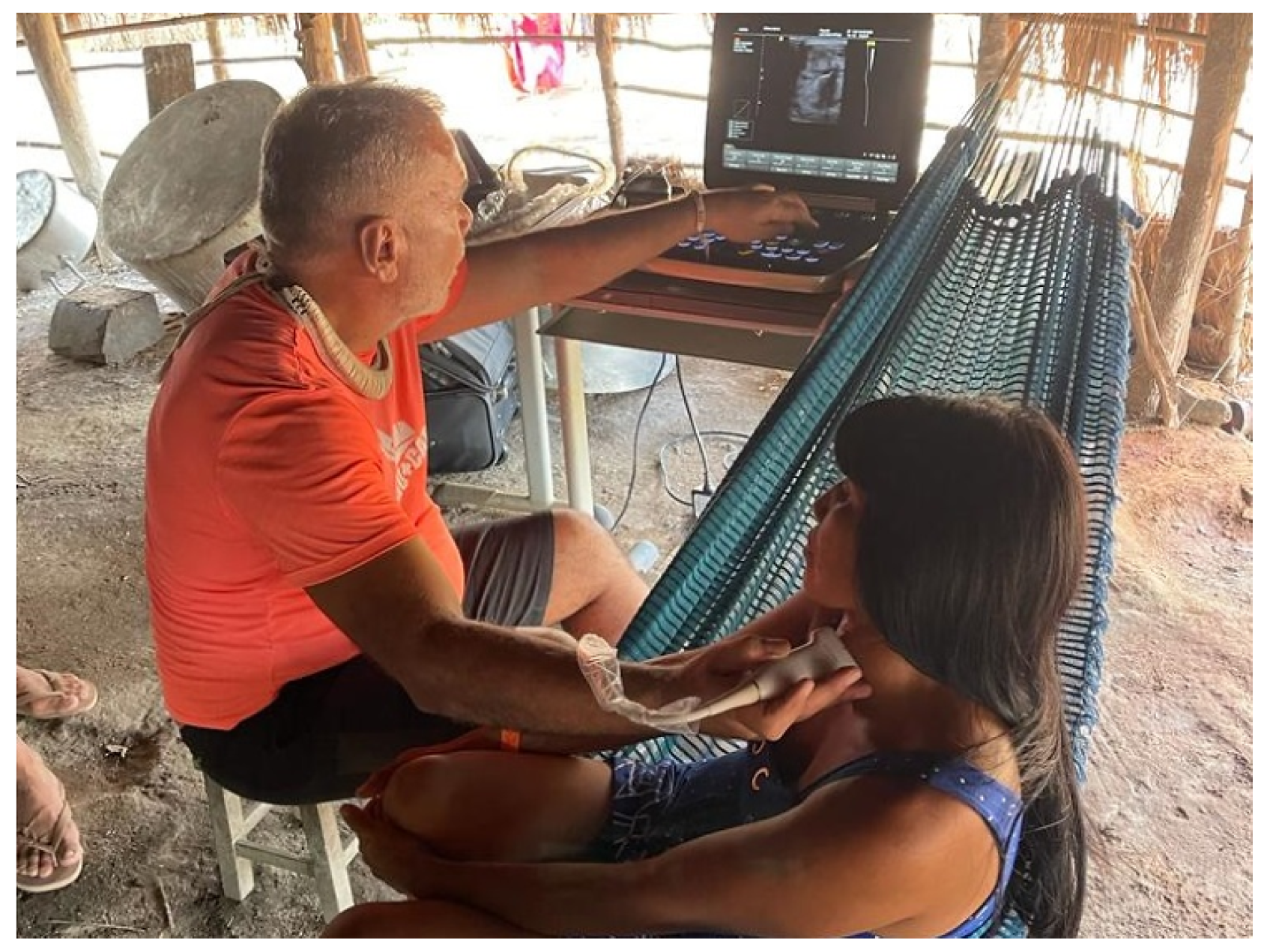

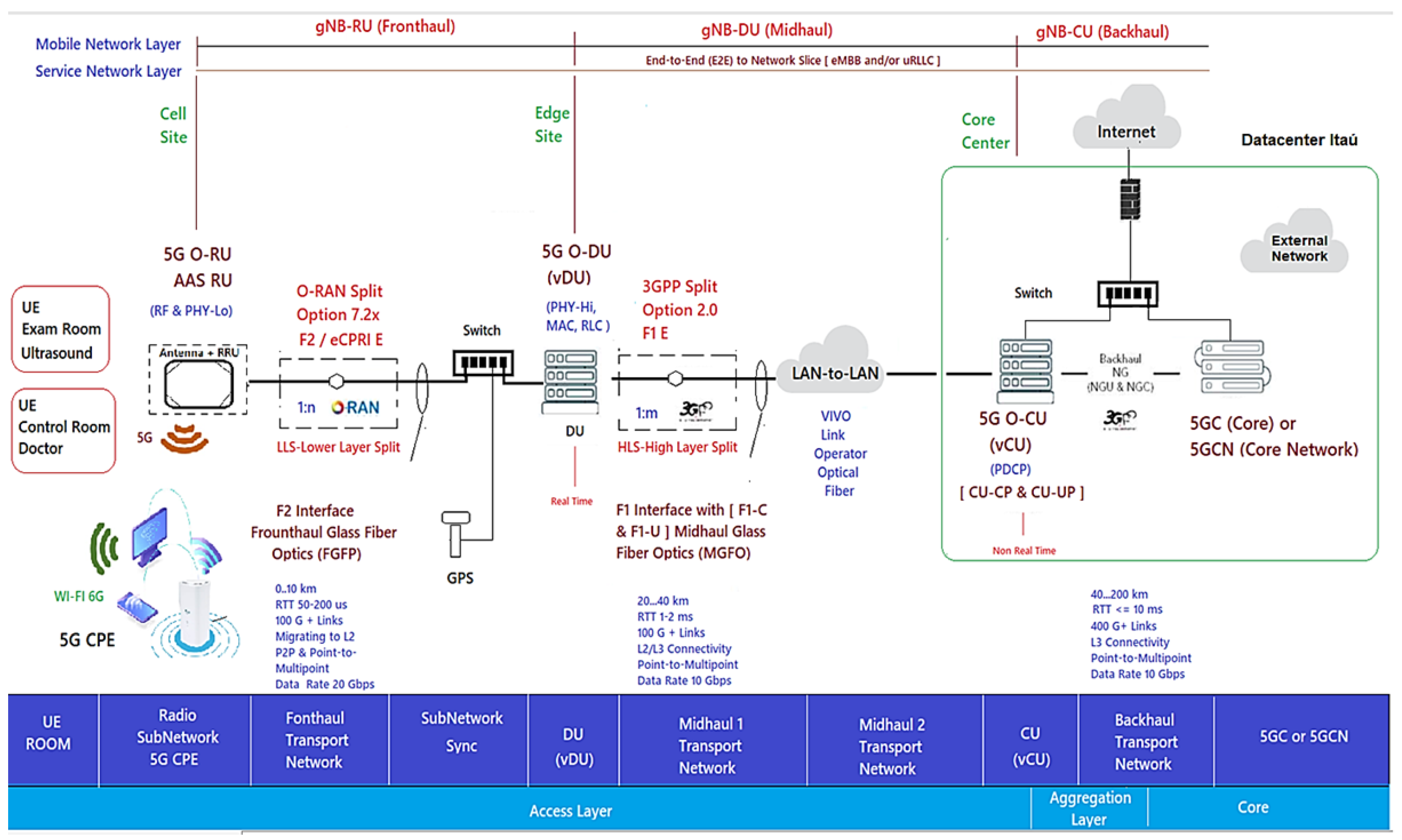
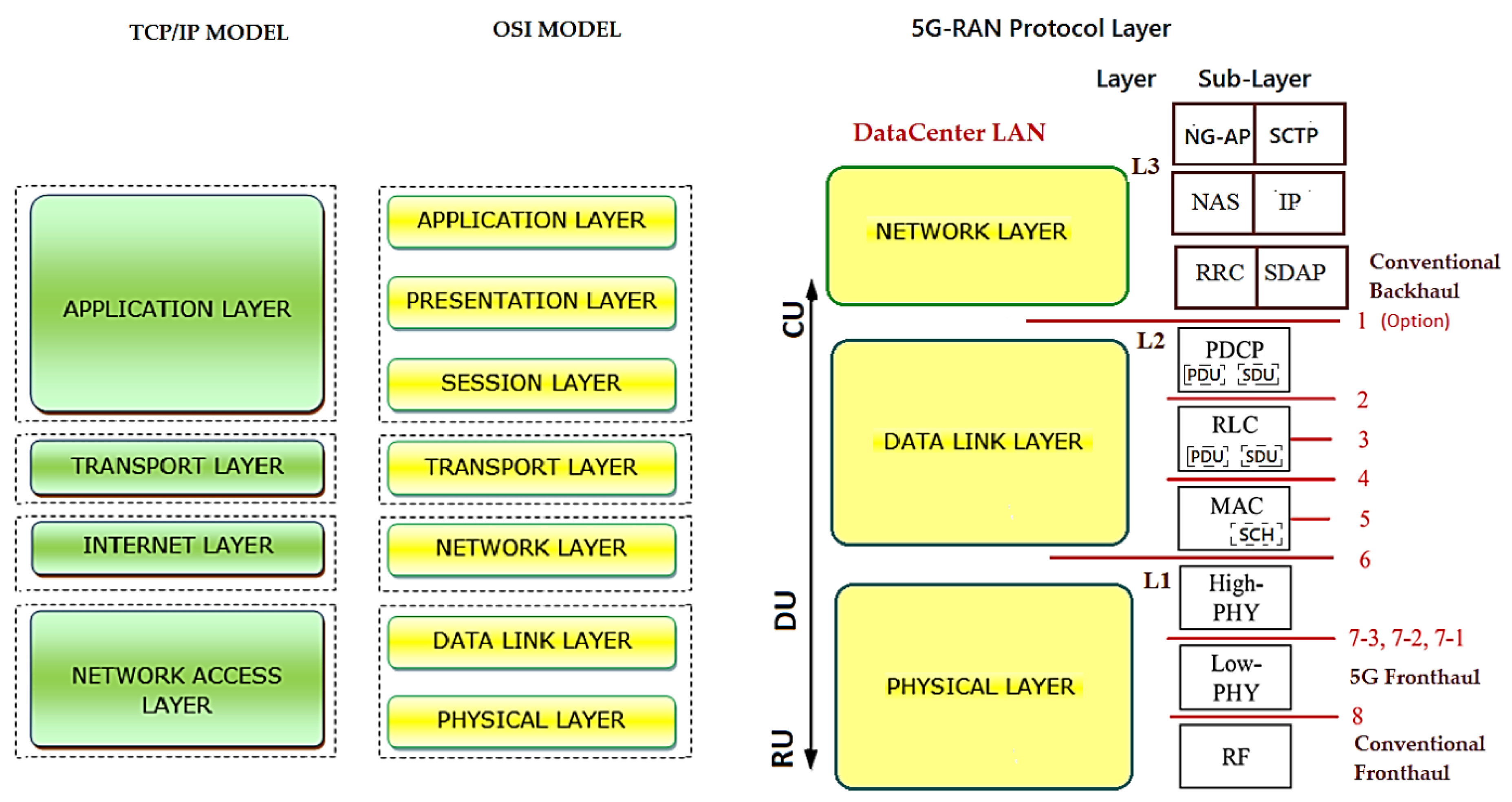

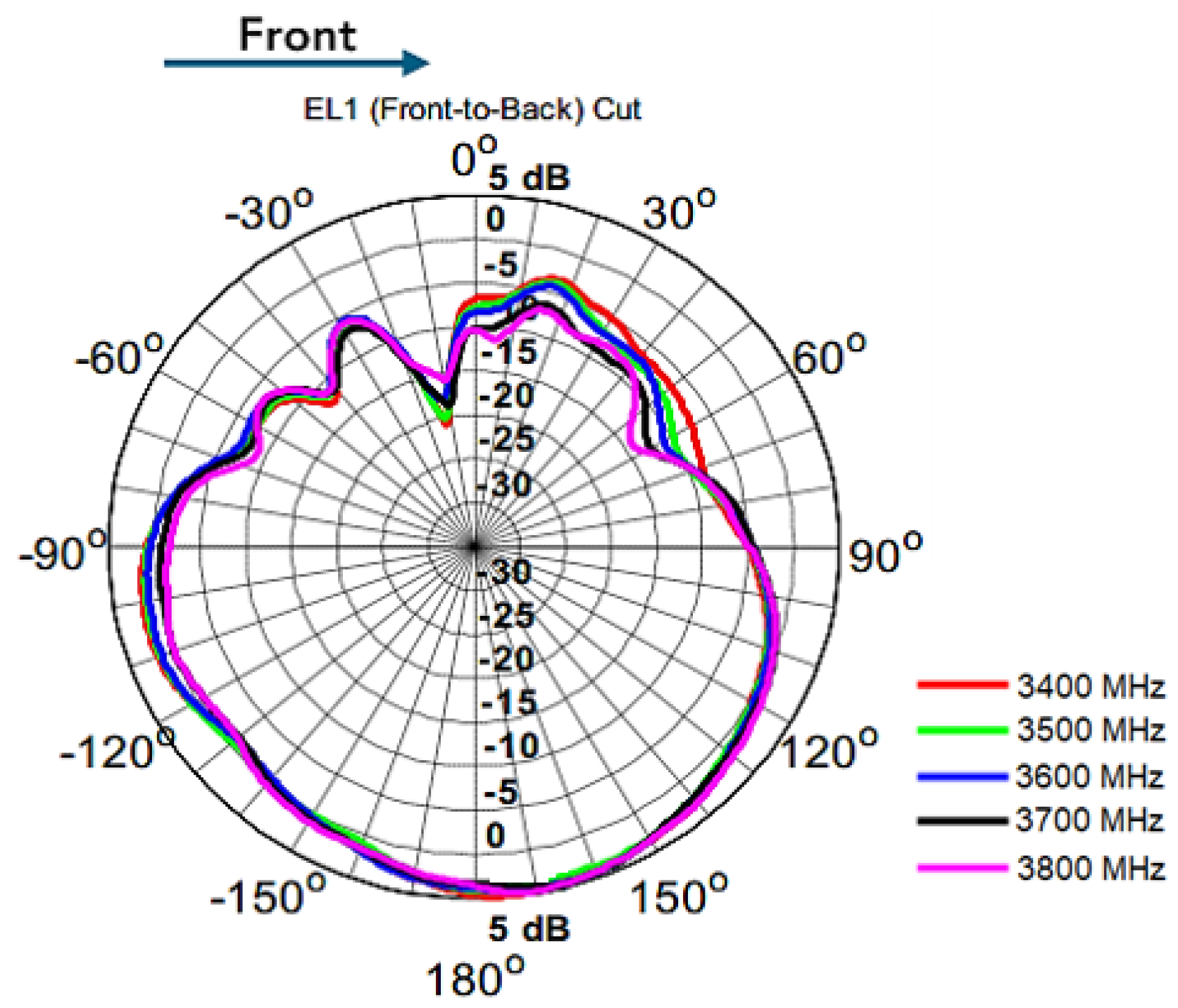

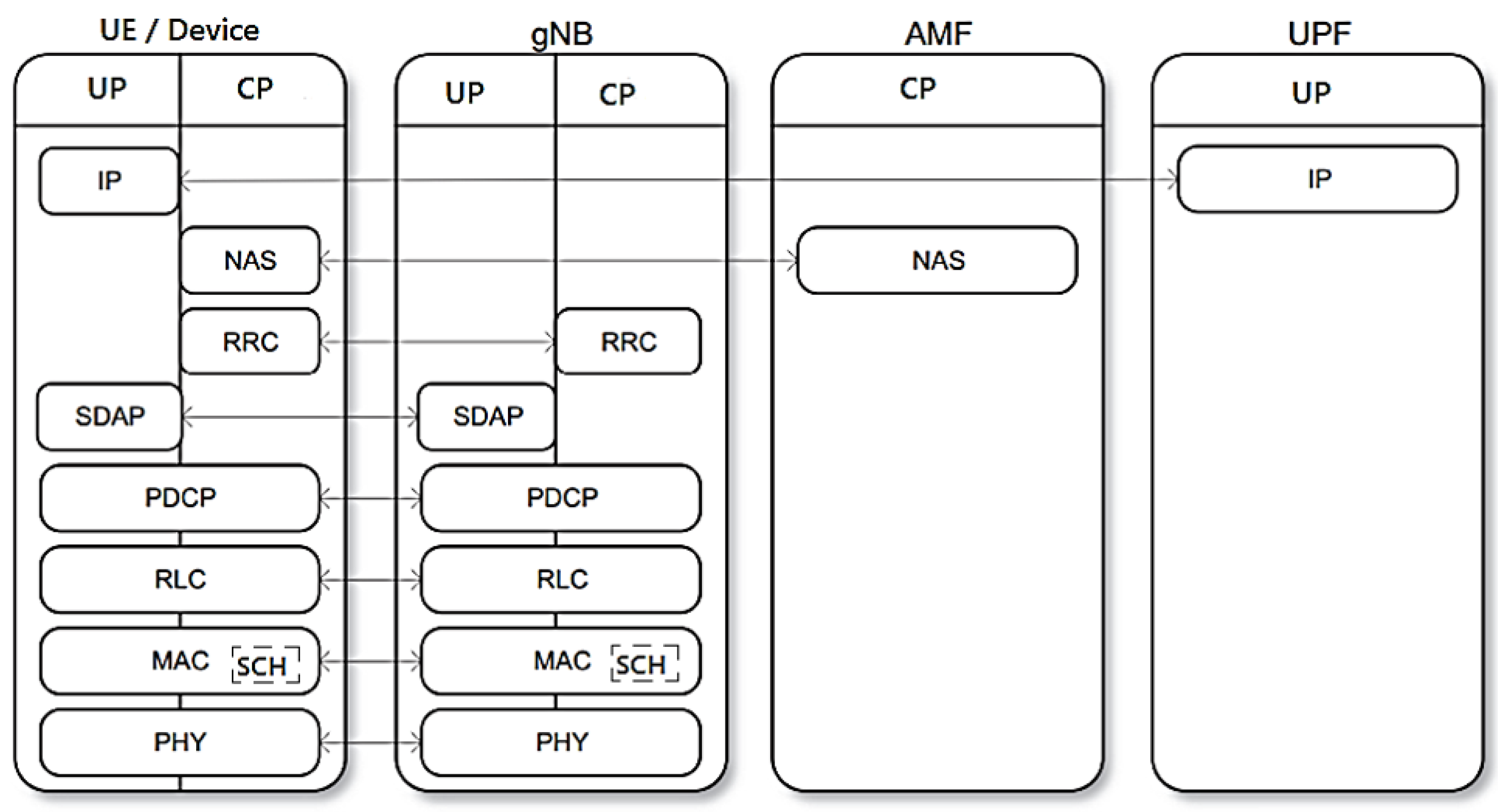
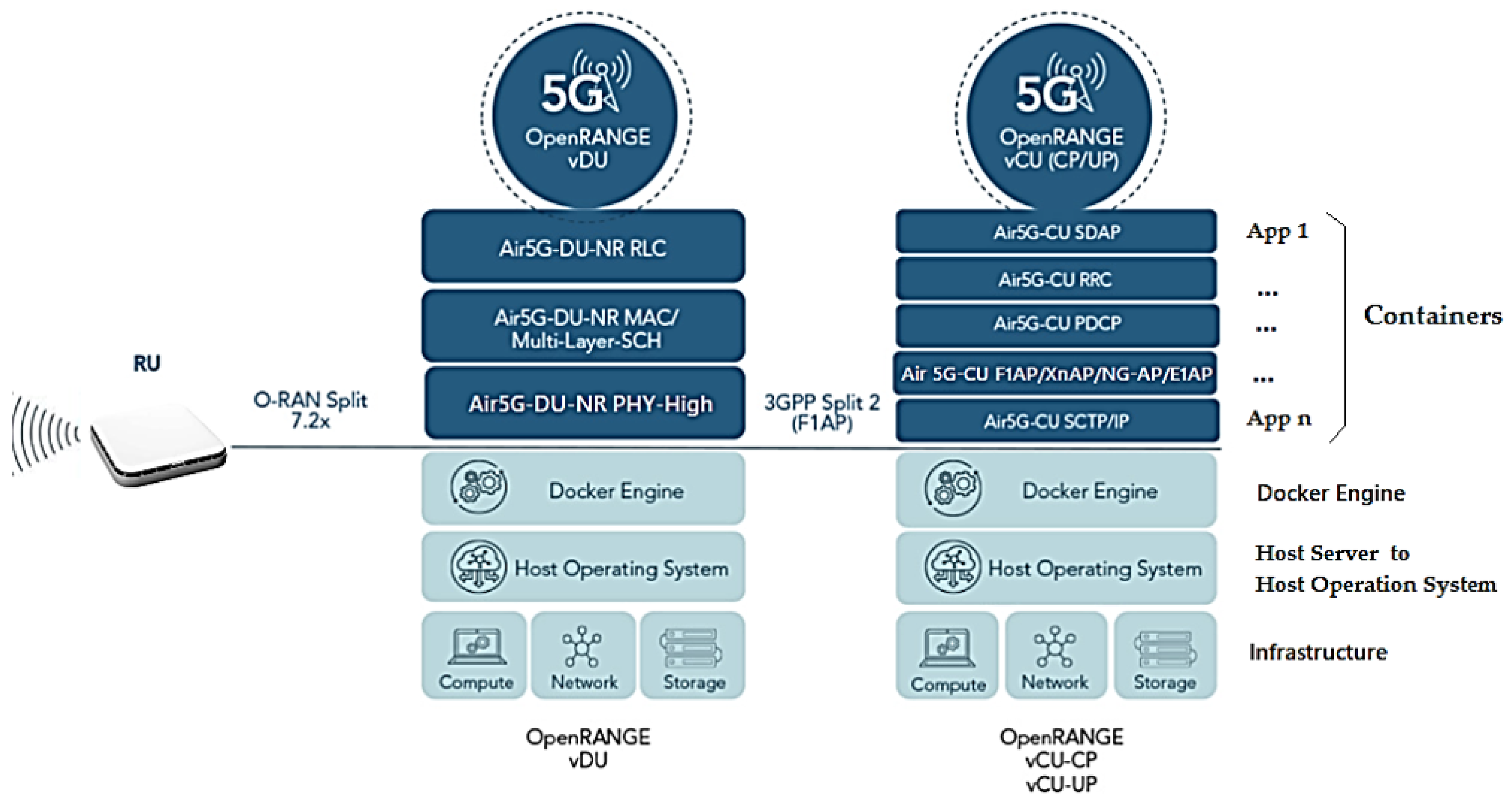
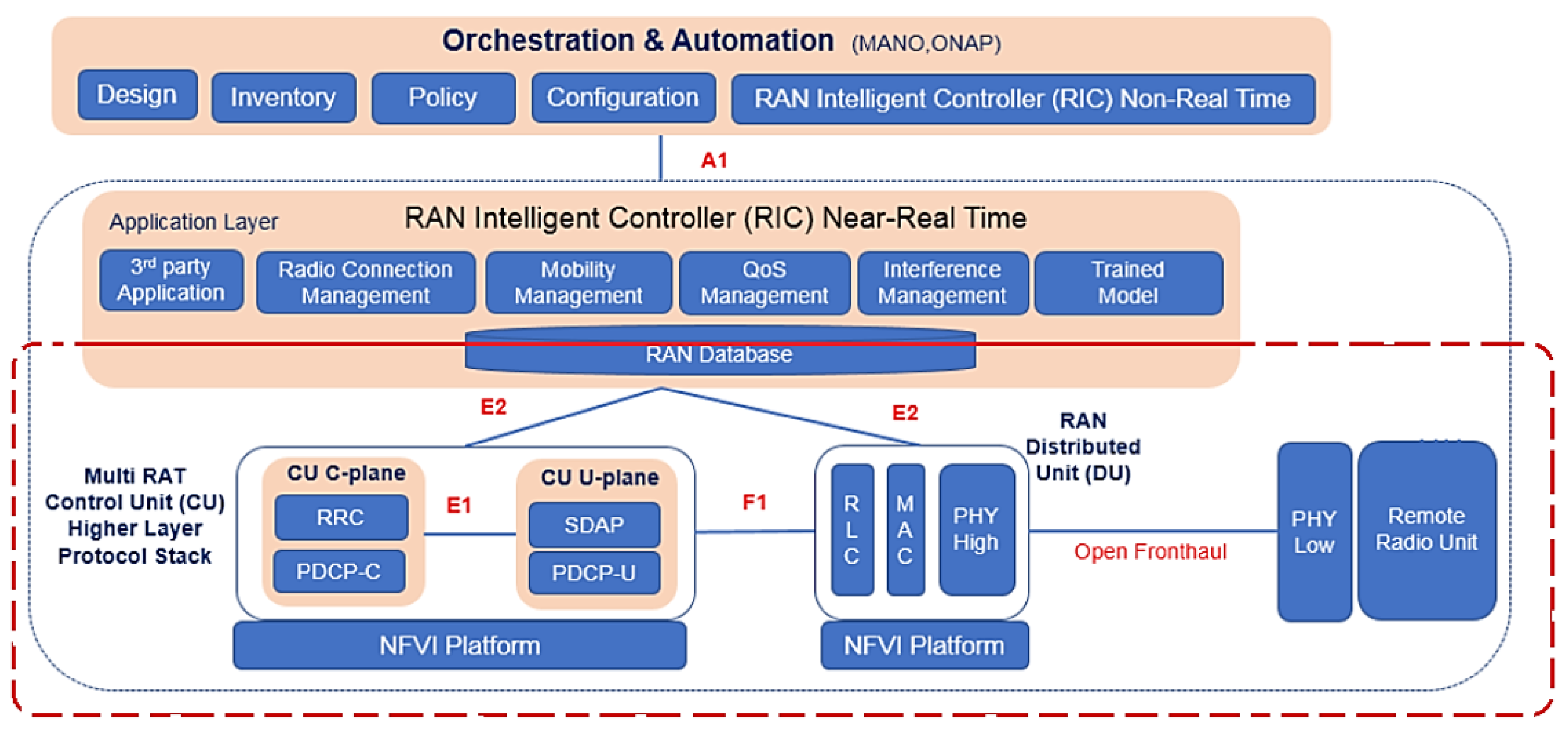
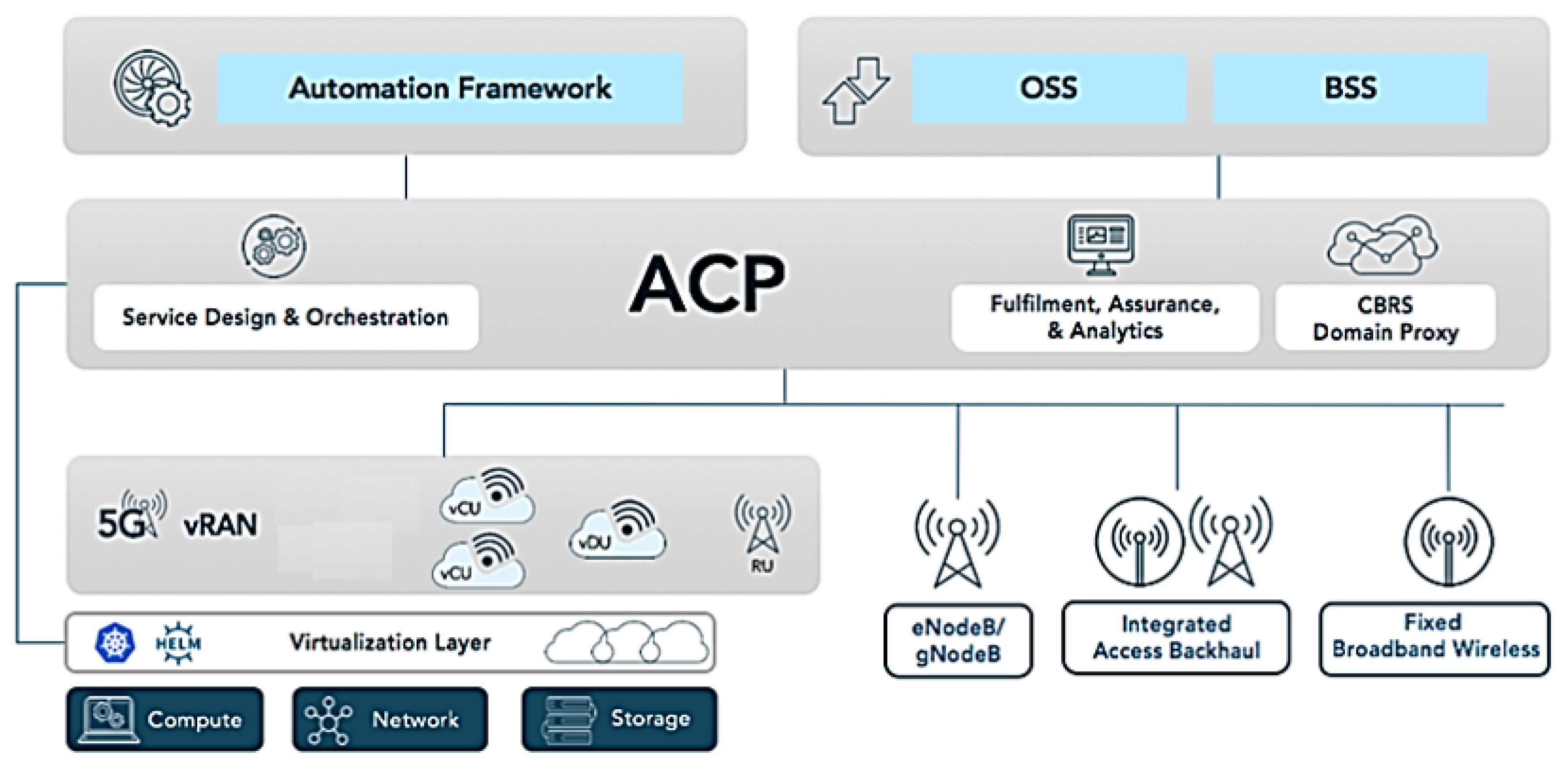
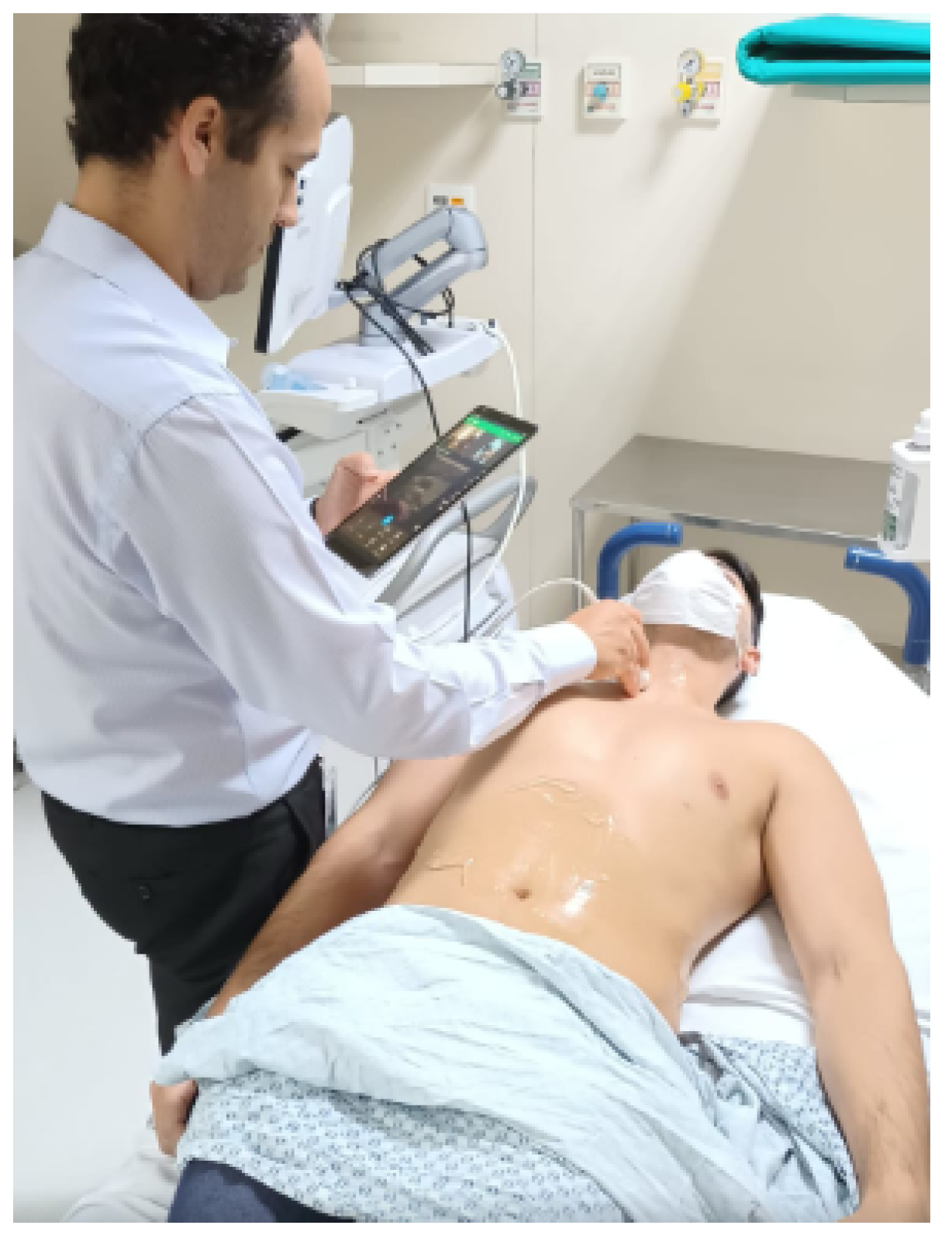
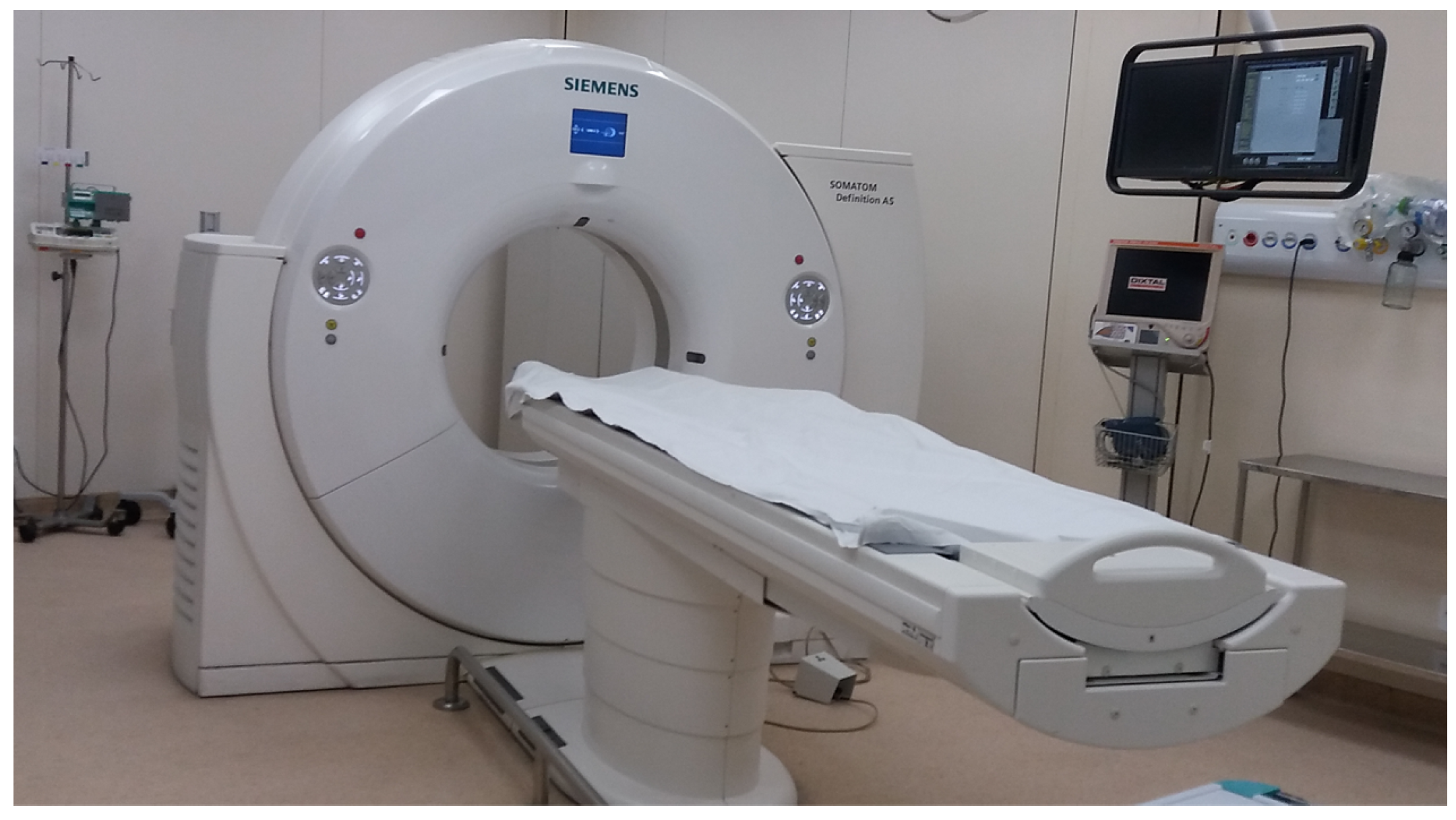
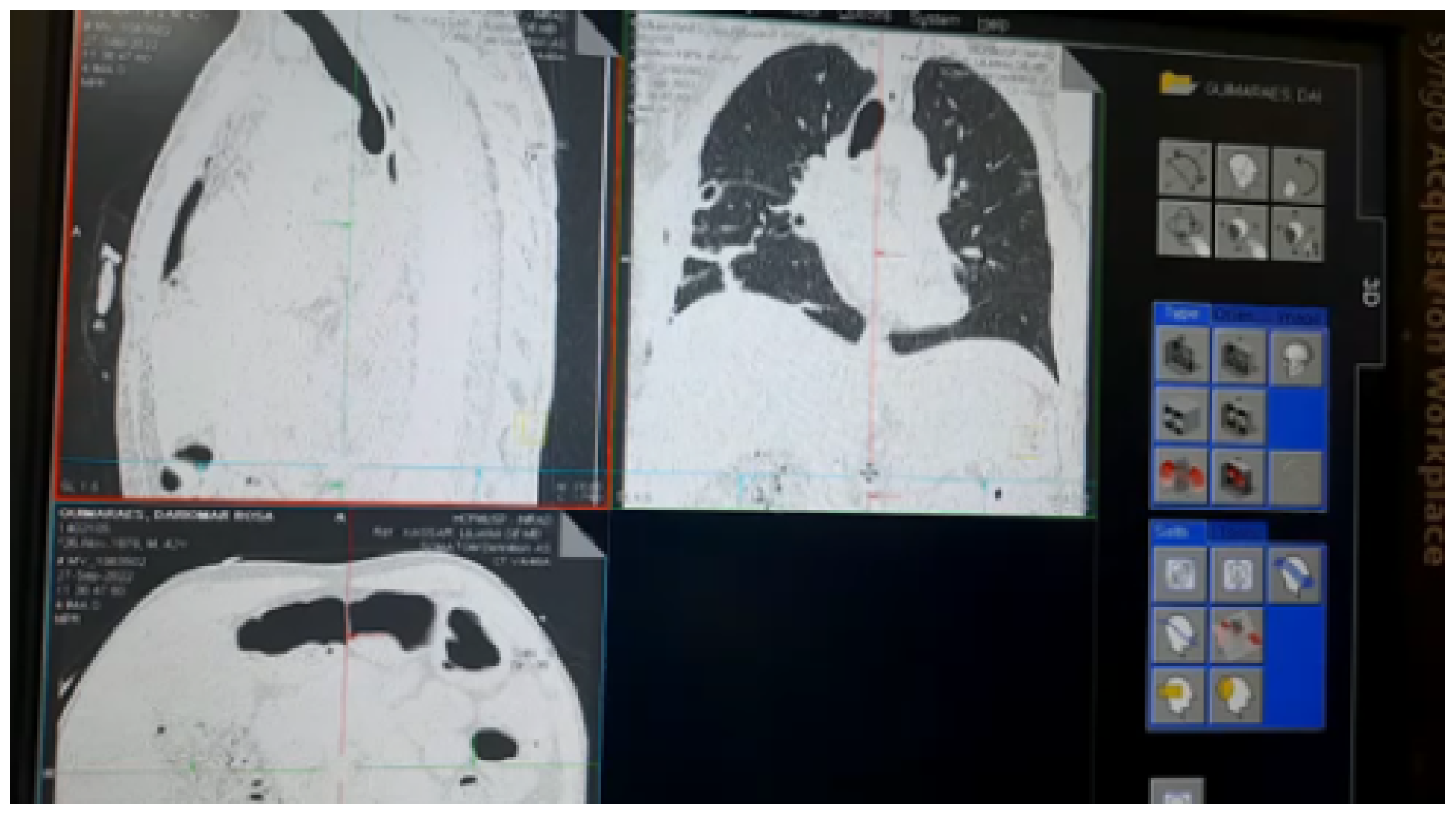
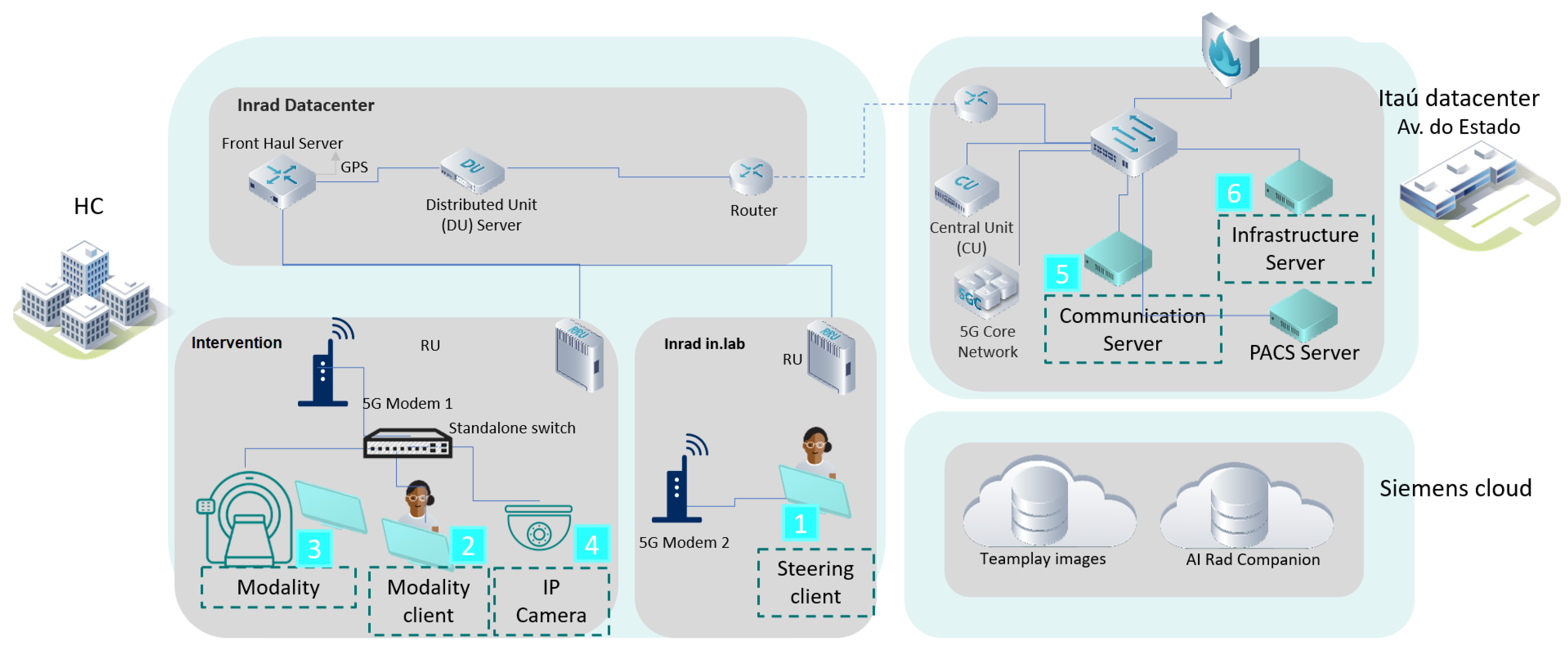
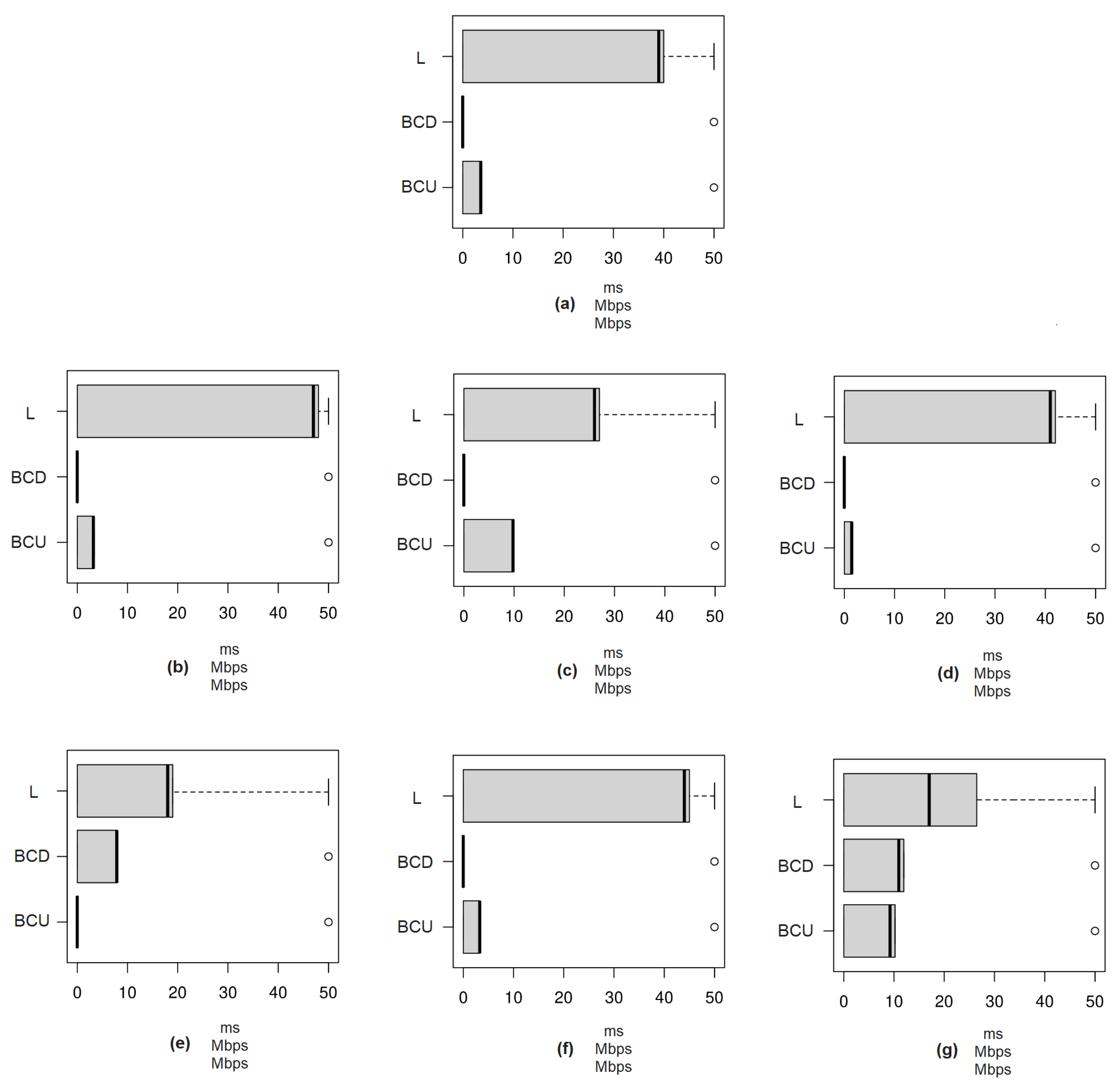
| Work | Contribution | Limitations | Future Work |
|---|---|---|---|
| Singh, Singh and Kumbhani (2020) [15] | The disaggregation of hardware and software creates a unified architecture through various advancements and brings many benefits such as low latency and network slicing. In addition to facilitating network automation, O-RAN offers several benefits such as agility, deployment flexibility, real-time responsiveness and operating cost reduction. | Reduction in operating cost by estimating the plug-and-play feature of O-RAN; modern learning methods can reduce maintenance cost up to 80%. | Implementing RIC policies close to real-time and non-real-time control loop meeting economic and ecological aspects; coordination, updating and training are difficult with modern ML and AI learning techniques and the challenging handling of data (between layers). |
| Wang et al. (2022) [19] | They modeled the RU-DU resource allocation problem in an O-RAN as a packing problem, proposing a self-play reinforcement learning strategy. They applied the combined approach of deep neural network with Monte-Carlo Tree Search (MCTS) to solve this combinatorial optimization problem. | Learning by auto-run eliminates the need for demonstrator data, which can be expensive and time-consuming to collect. | Mapping RU shift requirements to local mobile edge computing centers for future centralized processing that would significantly reduce power consumption in cellular networks. That is, we study the resource allocation problem between the RU-DU of the O-RAN system modeled as a 2D packing problem. |
| Lekshmi and Ponnekanti (2019) [20] | ML can play significant roles in learning from the wireless environment variations, categorizing problems, anticipating challenges, predicting outcomes, and exploring possible solutions, decisions, and actions. | Current RANs are reactive and base stations run algorithms on the centralized server to meet user demands. However, in 5G, even ms of delay can cause a great impact. | Sustaining advanced RLM requires an efficient implementation of ML-based traffic optimization that can handle large volumes of data in 5G networks. |
| Polese et al. (2022) [21] | O-RAN networks will dramatically change the design, deployment, and next-generation operations for cellular and other networks, allowing, among other things, transformative applications of ML for RAN optimization and control. | RAN reconfiguration with equipment whose operations cannot be adjusted to support diverse deployments and different traffic profiles; limited co-ordination between network nodes. | Real-time control loops will be included that operate in the real-time domain, i.e., below 10 ms for RRM at the RAN node level, or even below 1 ms for device management and optimization. |
| Steering 1 | Description | Results 2 | Evaluation |
|---|---|---|---|
| Test 1 | Access, via VNC Client on PC1, to the VNC Server on PC2. | [PC2 (Test 1)—VNC protocol: L = 40 ms; BCU = 3.79 Mbps; BCD = NA]. | Application responding normally to commands, without loss of performance. |
| Test 2 | Access, via VNC Client on PC1, to the VNC Server on PC2, with image transfer towards PC2 –> PACS Itaú. | [PC1 (Test 2-1)—via VNC: L = 48 ms; BCU = 3.39 Mbps; BCD = NA] / [PC1 (Test 2-2)—via PACS: L = 27 ms; BCU = 9.94 Mbps; BCD = NA]. | Application responding normally to commands, without loss of performance. |
| Test 3 | Access, via VNC Client on PC1, to the VNC Server on PC2, with image transfer towards PACS Itaú –> PC2. | [PC1 (Test 3-1)—via VNC: L = 42 ms; BCU = 1.57 Mbps; BCD = NA] / [PC1 (Test 3-2)—via PACS: L = 19 ms; BCU = NA; BCD = 7.93 Mbps]. | Application responding normally to commands, without loss of performance. |
| Test 4 | Access, via VNC Client on PC1, to the VNC Server on PC2, with image transfer towards PC2 –> PACS Itaú and PACS Itaú –> PC2. | [PC1 (Test 4-1)—via VNC: L = 45 ms; BCU = 3.38 Mbps; BCD = NA] / [PC1 (Test 4-2)—via PACS: L = 17–26 ms; BCU = 10.21 Mbps; BCD = 11.95 Mbps]. | Application responding normally to commands, without loss of performance. |
Disclaimer/Publisher’s Note: The statements, opinions and data contained in all publications are solely those of the individual author(s) and contributor(s) and not of MDPI and/or the editor(s). MDPI and/or the editor(s) disclaim responsibility for any injury to people or property resulting from any ideas, methods, instructions or products referred to in the content. |
© 2023 by the authors. Licensee MDPI, Basel, Switzerland. This article is an open access article distributed under the terms and conditions of the Creative Commons Attribution (CC BY) license (https://creativecommons.org/licenses/by/4.0/).
Share and Cite
de Oliveira, W.; Batista, J.O.R., Jr.; Novais, T.; Takashima, S.T.; Stange, L.R.; Martucci, M., Jr.; Cugnasca, C.E.; Bressan, G. OpenCare5G: O-RAN in Private Network for Digital Health Applications. Sensors 2023, 23, 1047. https://doi.org/10.3390/s23021047
de Oliveira W, Batista JOR Jr., Novais T, Takashima ST, Stange LR, Martucci M Jr., Cugnasca CE, Bressan G. OpenCare5G: O-RAN in Private Network for Digital Health Applications. Sensors. 2023; 23(2):1047. https://doi.org/10.3390/s23021047
Chicago/Turabian Stylede Oliveira, Wagner, José Olimpio Rodrigues Batista, Jr., Tiago Novais, Silvio Toshiyuki Takashima, Leonardo Roccon Stange, Moacyr Martucci, Jr., Carlos Eduardo Cugnasca, and Graça Bressan. 2023. "OpenCare5G: O-RAN in Private Network for Digital Health Applications" Sensors 23, no. 2: 1047. https://doi.org/10.3390/s23021047
APA Stylede Oliveira, W., Batista, J. O. R., Jr., Novais, T., Takashima, S. T., Stange, L. R., Martucci, M., Jr., Cugnasca, C. E., & Bressan, G. (2023). OpenCare5G: O-RAN in Private Network for Digital Health Applications. Sensors, 23(2), 1047. https://doi.org/10.3390/s23021047














